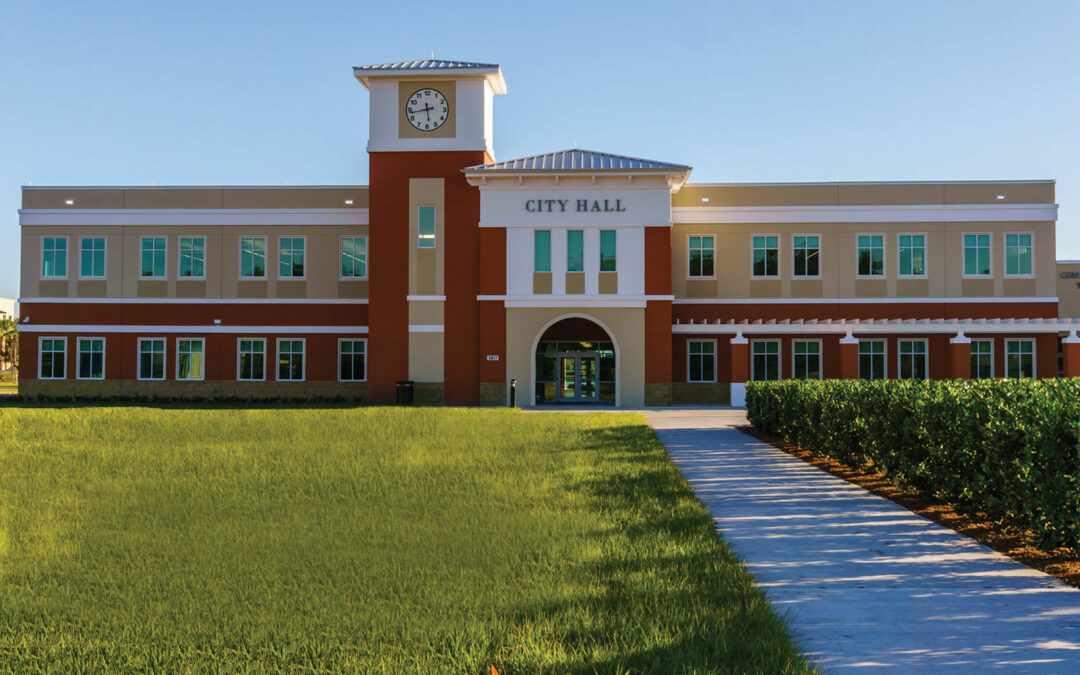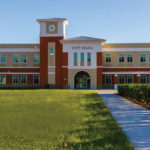Council approves resident-driven process for speed control devices while narrowing search to two finalists
The Palm Coast City Council made progress on two major initiatives during their October 14, 2025, workshop meeting: establishing a formal traffic calming request process and selecting finalists for the next city manager position.
Traffic Calming Process Approved
The council unanimously approved a three-step application process allowing residents to request traffic calming devices like speed bumps on residential collector roads where speeding is documented.
Transportation staff presented eligibility criteria requiring roads to meet specific thresholds: either an 85th percentile speed exceeding three miles per hour above the posted limit with more than 2,000 vehicles daily, or at least 10% of vehicles traveling eight miles per hour over the speed limit.
The council selected “Option Two” for determining which households can vote on traffic calming requests. This includes homes directly on the affected road plus homes on streets with access only from that road—ensuring those forced to use the road have input on changes.
For the voting method, council members chose mail-in ballots over online voting or door-to-door petitions. The mail-in system will include maps showing proposed device locations and allow residents to vote yes or no.
“By far, if I learn one thing, it’s to do the mail in,” said Carl Cote, Director of Stormwater and Engineering, citing feedback from Orange County’s similar program. “It eliminates somebody falling on somebody else’s property.”
Approval requires 70% of homeowners in the affected area to support the request. The program launches in January 2026, with eligible roads included in the fiscal year 2027 budget.
Renewed Push for Lower Speed Limits
Several council members and residents advocated for lowering residential speed limits from 30 to 25 or even 20 miles per hour throughout the city, rather than relying on individual traffic calming requests.
“To the extent that we’d put around our schools to slow people to 20 miles an hour for students, for kids—flashing lights, crossing guards, a plethora of sheriffs—all over to slow them to 20,” resident Mark Webb told the council. “Well, these kids on their e-bikes, on their bikes, are driving from a half a mile to two miles to get to the school on 30-mile-an-hour roads, no sidewalk.”
Vice Mayor Teresa Pontieri expressed strong support for reducing speeds citywide. “I’m tired of reading about car accidents. I’m tired of reading about injuries. I’m tired of reading about people, quite candidly, being killed on the roads,” she said.
The challenge lies in implementation costs. Lowering speed limits on local residential roads would require new signage at an estimated $1.2 million if done by contractors, according to previous studies. State statute requires speed limit signs when zones change, though staff is researching whether signs at neighborhood entrances would suffice.
Several council members suggested pausing the city’s microsurfacing program for one year to fund speed limit changes. The council directed staff to obtain updated cost estimates and explore funding options during upcoming Strategic Action Plan discussions.
City Manager Finalists Selected
After reviewing materials from six remaining candidates, the council selected two finalists for in-person interviews: James Frazier and Michael McLaughlin.
The selection process involved each council member ranking their top three choices. Frazier received votes from all five council members in various rankings, while McLaughlin received support from three members.
Council members eliminated one candidate, Carl Gafkin, despite his strong qualifications, citing concerns about internet research showing he was fired from a previous position for being defiant and facing multiple lawsuits.
Norman West, a resident and retired military officer who managed organizations of over 95,000 people, received two first-place votes but was not selected as a finalist. Some council members preferred candidates with direct municipal government experience.
“I think Mr. West is an excellent candidate. He had an excellent white paper,” Pontieri said. “He’s a proven executive. He successfully managed budgets… and he’s run an organization of over 95,000 people.”
However, the majority favored Frazier and McLaughlin, who both have city government backgrounds.
Interviews are scheduled for November 13, 2025. The council set a salary cap of $250,000 for negotiations, compared to the current acting city manager’s salary, in the approximate range of $190,000 – $210,000.
Other Business
Cultural Arts Grants: The council will vote next week on approximately $77,000 in cultural arts grants managed by the Flagler County Cultural Council (FC3). All seven applicants received funding, with amounts ranging from $2,013 to $12,000 for various arts, history, and cultural programs.
Vice Mayor Pontieri requested clearer communication in future grant cycles about whether applications can cover ongoing programs or must focus on single events. She also asked for detailed breakdowns of how grant funds will be spent for each program.
Backyard Chickens: The council directed staff to finalize an ordinance allowing backyard chickens by December, following the conclusion of the current pilot program. Changes from the pilot include increasing the permit cap from 50 to 100, removing language allowing unannounced inspections, and softening penalties for violations.
The council also agreed to allow renters to participate if property owners co-sign applications, addressing concerns about excluding long-term tenants from the program.
Resident Concerns: Multiple residents spoke about ongoing issues, including water billing disputes, animal shelter capacity, drainage problems from neighboring properties, and requests for stricter cell tower placement regulations.
Jeremy Davis, who has spent over $78,000 addressing flooding he attributes to an approved lot elevation next door, reminded the council that “property rights only matter when they’re upheld equally for every resident, not just spoken about in meetings.”









